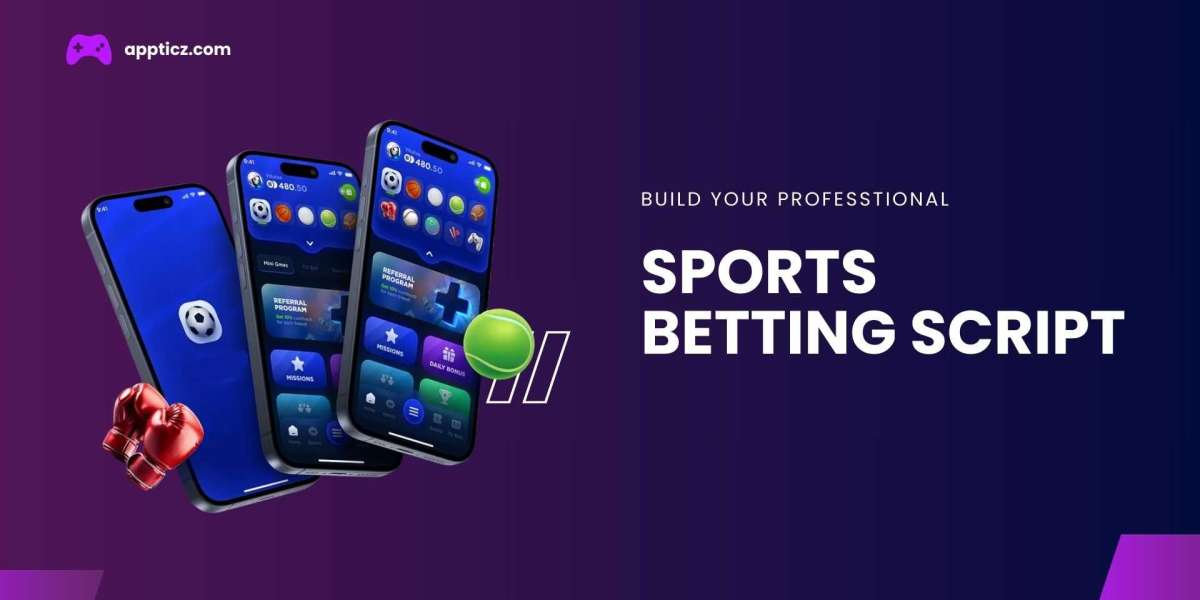Optimizing your sports betting script is a multi-faced approach for developers while concentrating both the backend and frontend. Here's a comprehensive breakdown
1. Backend Optimization:
⋇ Database optimization
◦ Indexing: Properly index database tables to speed up queries.
◦ Query Optimization: Optimize complex queries to reduce execution time.
◦ Database Caching: Implement caching mechanisms (e.g., Redis, Memcached) to store frequently accessed data.
◦ Database Sharding/Partitioning: Distribute data across multiple databases to improve performance.
⋇ Server Architecture:
◦ Load Balancing: Distribute traffic across multiple servers to prevent overload.
◦ Scalable Infrastructure: Cloud-based infrastructure (AWS, Azure, GCP) can automatically scale resources based on demand.
◦ Microservices Architecture: Break down the application into smaller, independent services for better scalability and maintainability.
⋇ Real-time Data Processing:
◦ WebSockets: Use WebSockets for real-time communication between the server and clients, enabling instant updates.
◦ Message Queues: Implement message queues (e.g., RabbitMQ, Kafka) to handle asynchronous tasks and real-time data streams.
◦ Efficient Data Storage: Use appropriate data storage solutions for real-time data (e.g., time-series databases).
⋇ Caching Strategies:
◦ Content Delivery Network (CDN): Use a CDN to cache static content (images, CSS, JavaScript) and reduce latency.
◦ API Caching: Cache API responses to reduce server load.
⋇ Code Optimization:
◦ Efficient Algorithms: Use efficient algorithms and data structures to minimize processing time.
◦ Asynchronous Operations: Perform time-consuming tasks asynchronously to prevent blocking the main thread.
2. Frontend Optimization:
◦ Minimize HTTP Requests: Reduce the number of HTTP requests by combining files and using CSS sprites.
◦ Image Optimization: Compress images and use appropriate formats (e.g., WebP) to reduce file size.
◦ Code Minification and Bundling: Minify and bundle JavaScript and CSS files to reduce file size and improve loading times.
◦ Lazy Loading: Implement lazy loading for images and other resources to improve initial page load time.
◦ Virtual DOM (React, Vue.js): Use frameworks with virtual DOM capabilities to optimize rendering performance.
◦ Web Workers: Use Web Workers to offload computationally intensive tasks to background threads.
⋇ Real-time UI Updates:
◦ Efficient UI Updates: Update only the necessary parts of the UI to minimize rendering time.
◦ Debouncing and Throttling: Use debouncing and throttling techniques to prevent excessive updates.
3. Network Optimization:
◦ Optimize API Calls: Minimize the number of API calls and optimize API responses for smaller data sizes.
◦ Use WebSockets for real-time updates: This reduces overhead compared to repeated HTTP requests.
◦ Implement compression: Gzip or Brotli compression can significantly reduce the size of data transferred over the network.
4. Testing and Monitoring:
◦ Load Testing: Perform load testing to simulate high traffic and identify performance bottlenecks.
◦ Performance Monitoring: Use monitoring tools to track key performance metrics (e.g., response time, error rate).
◦ Real-time Monitoring: Implement real-time monitoring to detect and address performance issues as they occur.
5. Security Considerations:
◦ DDoS Protection: Implement DDoS protection to mitigate attacks that can overwhelm the server.
◦ Secure Coding Practices: Follow secure coding practices to prevent vulnerabilities.
◦ Regular Security Audits: Conduct regular security audits to identify and address security risks.
Here, we list potential optimization methods for your best sports betting clone app. Appticz is a top-tier solution provider in the on-demand industry. We have plenty of industrial experts and techies who will make your business idea more practical.
Science and Technology
How can a sports betting script be optimized for high traffic and real-time updates?

Optimizing a sports betting script










